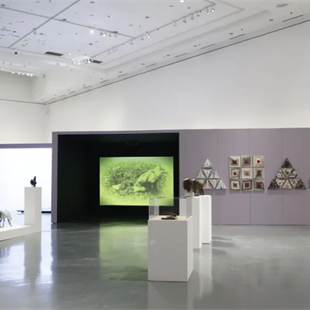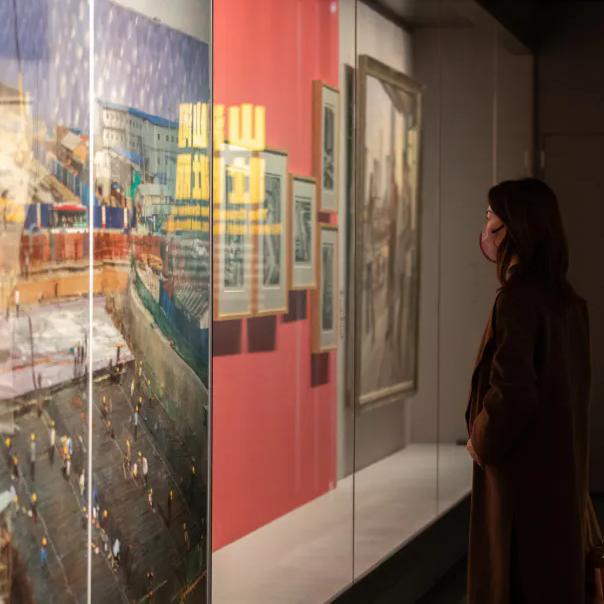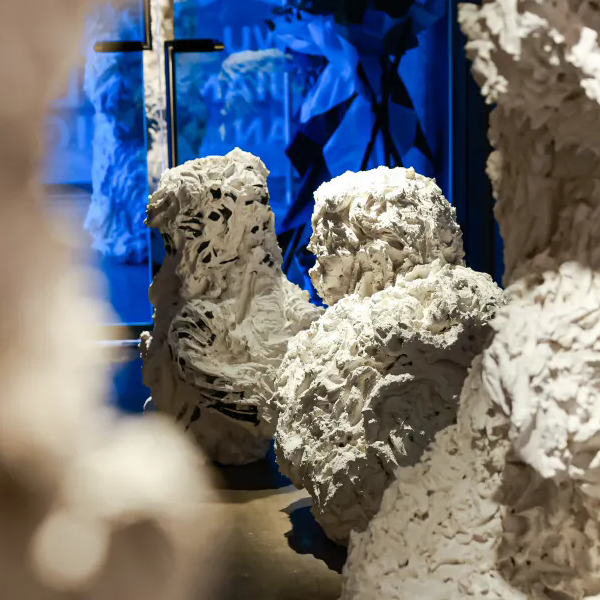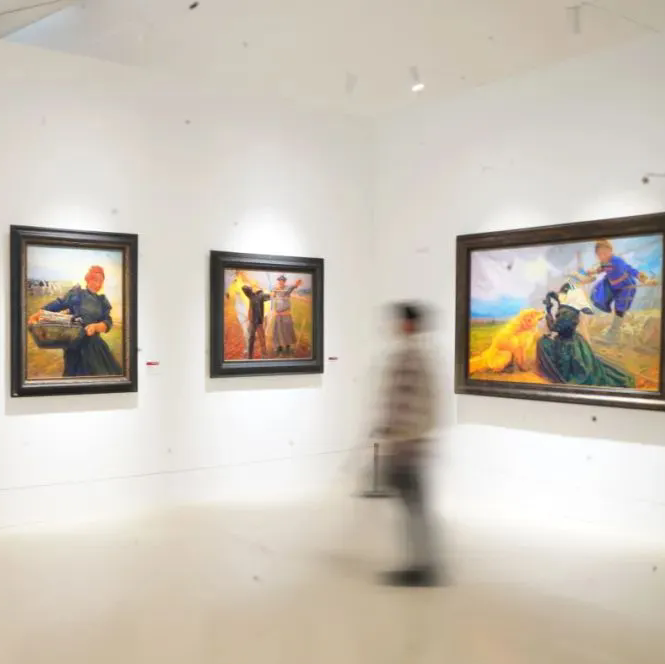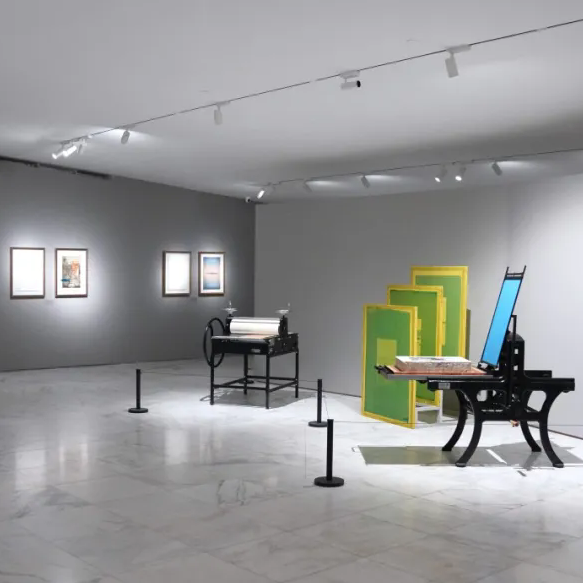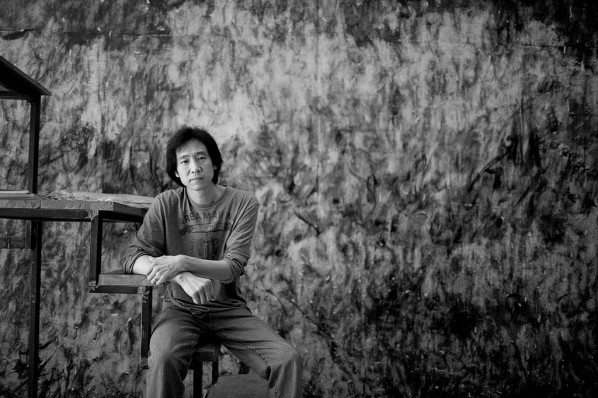
Carving
By Shu Kewen
When he darkened the wall-sized printing plate with black ink, he was dedicating himself to unbounded obscurity. His previous work, together with all the artistic conceptions that had challenged his work, was buried in the darkness, which interrupted his train of thought for working, questioned whether to meet the challenge or not, and eliminated things to be expressed. How could he fight the darkness and return in face of this pent-up and obscure moment alone? Groys once criticized that melancholy and solitary modern meditation did not lead to any conclusive and well-founded aesthetic judgment. At the moment, only action spoke louder than words. What he reserved for himself was merely the covered wooden plate, a woodcut knife in hand and skilled techniques. That was Yang Hongwei in the winter of 2008.
How could the printing plate and woodcut knife, as a tool and material, guide the artist? How could he establish his relationship with the plate? Those questions occurred to him countless times. In his twenty years’ of work in printmaking, he often focused on conceiving printed out images and ignored the plate itself when he was working on a piece. How to reestablish the understanding of the plate has become the stance for his work. First of all, he needs to scatter the darkness over it, recognizing the existence of the plate. But the problem of carving techniques emerges when he starts to carve, and the texture of wood is exposed like a wound. The predecessor Li Hua has summed up 48 skills, all of which Yang also masters. But how could he make the most of these skills so that the carving doesn’t fail the texture and nature of wood?
The response to the texture and nature of wood is just the response to carving techniques. All has brought about a pure and solid feeling. He finished Water All in One in 2010. But when he first faced the obscure darkness, he could not fill up the large space on the plate no matter how he framed it. He imagined numerous dots, which were related to the plate rather than any graphics, lines or expressions. He also attempted to probe into the dots for the nature of wood, but suffered for one year and a half, just like a prisoner, to endure, assume and wait, together with the plate, for the dots to diffuse like water. The tardy, pure and mild changes were simply created by the structure of dots. Compared with tempestuous storms, or waves, the boundless water was peaceful, without any promise at all, but embodies a sense of time and unpredictable depth and energy. Therefore, what the work presented was no longer the structure, but the pervasion of actions and the outcome of the accumulation of time. The pieces of carving marks broke through the darkness and obscurity set up by himself, in the same way that chaos was broken. It was estimated that he carved the plate 36 millions times, which revealed his mild commitment to work, as well as a kind of mechanical poetry.
[gallery link="file" orderby="title"]
The solemn stand toward sensibility enables him to carve a plotted story that he attempts to rely on. His much devoted self-worth also endows the work with the desire of resistance to the “now” that we are trapped in, or the grace that is put aside. What is truly resisted is the ultimate and realistic manner of experience, or the Utopian experience of salvation.
The contemporary depiction and illumination of reality leads to a mental evasion of reality. In The Storyteller, Benjamin analyzed novels in post-modern times and concluded that illustration was no longer used to express one’s own concern for present human existence, but an incommensurate experience was emphasized instead. One of the clues might lie in the fact that modern writers have disassociated themselves from nature and history, consuming themselves in vain. There are a number of attempts to resist this in contemporary art, aiming to involve themselves in an exterior world and history, and break through the dual isolation of the exterior world and interior experience.
The carving we are talking about here turns out to be an attempt like this. Carving is not a contingency or accident that can be remedied, nor is it a kind of solitary superorganic experience. Instead, it’s a daily apperception, an acknowledgement of visible things, and a basis on which artists could cooperate with the visible. Therefore, carving doesn’t apply to recurrence, narration, or opinions, doesn’t paraphrase, is not a mark, but is a state of being. Carving implies a way of woodcut, with vision tracing hands, rather than hands selecting something correspondent to vision. As a result, the world is where techniques are. It might be similar to the situations discovered by John Berger when he commented on Sammallahti’s photographs. There is more suffering and solitude, but expectation still persists. There might be sudden and fancy phenomena in everyday life, but daily scenes are still familiar to us, which corroborates that fancy phenomena are not necessarily the reopening or culmination of history. They could bring us a glimpse at a new order, and remind us to search for the corroboration once again.
Elements like water, stone, and fire in the “Carving” exhibition, act as a clue, which belong to the traditional motif of nature and history, so are similar to labor and seasonal changes. They are involved in the natural torrent, open both in time and space, and infinitely extensible in logic, to the work, and to the layers of wooden meal. They are not deployed narratively, but the encounter of objects is assured with the movement of hands. He cannot bear to regard the wooden meal as a remainder. Fag ends do not exist in natural history. The way to assurance is not well guided by cognition. Neither is it so dramatic. Therefore, the ink and wash style picture is never covered by plots even after it is printed out.
In the long work of The Millennium Monument, Yang starts the human stories with wood engraving. The 12 episodes, all of which are dramatic scenes, are placed in a consecutive and repeated narrative chain, but the drama vanishes in the changing combination of abstinency and arrogance. The power to stir the drama seems to come from exterior spontaneity and interior obtrusion of ourselves. The experience is quite similar to daily perception. A sea of information informs us of incidents in every corner of the world, no matter whether they are related to us or not, no matter if we realize where we are or not, things just carry on their own ways with punctuality. The closure with a beginning and an end in the long work can be comprehended as an infinite repetition of palingenesis, and wood engraving provides a technical possibility for the palingenesis, with numerous and complicated, particular and omnipresent traces.
In Carving, what is presented is the dynamic state of weathering and erosion, and the accumulating and repetitious carving, which interestingly contrasts with the complexity in The Millennium Monument. The two works serve as a foil to each other in dynamic and static states. The dramatic scenes in The Millennium Monument become more limited and temporary, as its dynamic state counts for little in contrast to Carving, whereas the sense of history and sadness embodied in the peace and loneliness in the carved Carving echoes time in contrast to The Millennium Monument.
However, I feel that Yang’s work is far away from the speculative thinking of contemporary art. When his work is interrupted by speculative modern conception and schema, he even evades passivity so that his experience will not be dominated by any judgment as long as he is with materials and tools that he is familiar with. His techniques could guide him in work, and the wood and woodcut knife he is familiar with are trusted as a part of his daily experience. But as the procedure of carving requires strict control of his hands and emotions, detention in time and space emerges in the carving and structure of the picture. Herein, he discovers a freedom and solid sense of action.
The freedom, as well as the works exhibited here, have nothing to do with plot, just with coexistence.
Feb., 2012
Translated by Lou Yuanling
Courtesy of Yang Hongwei and Shu Kewen.
About the exhibition
Exhibition: Carving
Opening Time: 16:00, March 4th, 2012
Exhibition Period: March 5th to 20th, 2012
Artist: Yang Hongwei
Curator: Shu Kewen
Organizer: Today Art Museum
Operator: Purple Gate Cultural Development Co.Ltd
Exhibition Place: Floor 2 Exhibition Hall, No.1 Building, Today Art Museum


